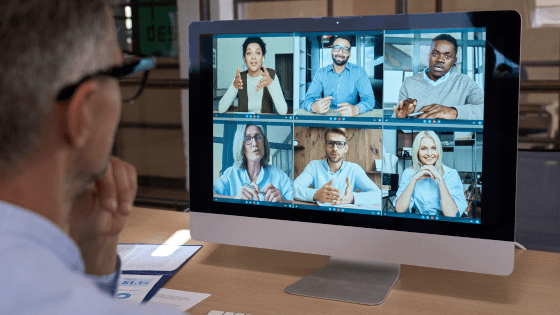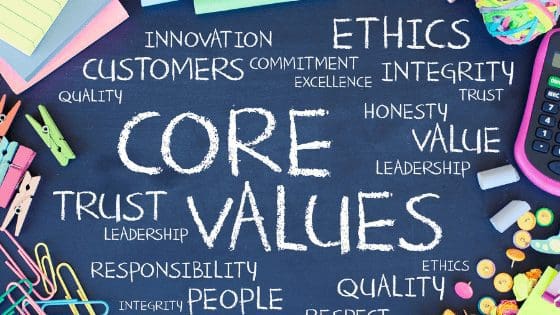Effective communication is the foundation of success in both personal and professional relationships, and it’s a skill that requires the ability to express oneself and the willingness to listen actively to others. Active listening has the power to transform the way you interact with others and how they respond to us. It enables you to understand others’ thoughts and emotions, build trust, and resolve conflicts, among other things.
Active listening is a skill that can be learned and developed. However, it is a skill that is more challenging to master than most people initially think, and it takes time and effort to hone – but the benefits are well worth it.
What is Active Listening?
Active listening is a term used to describe the practice of fully engaging with another party and fully understanding their message. It’s the art of listening to spoken words and non-verbal cues.
Imagine a situation where you’re conversing with someone, and they’re looking at their phone, checking their watch, or staring off into space. How would that make you feel? Would you think they weren’t paying attention? This is the opposite of active listening.
Active listening involves being present and giving your full attention to the other party. It means not interrupting, listening attentively, and not trying to rush people along by finishing their sentences for them. Instead, you listen patiently and focus on what they’re saying. You try to understand their message and perspective without judgement or preconceived notions.
One of the most important aspects of active listening is visual cues. Maintaining eye contact and nodding are simple but powerful ways to show the speaker you’re engaged in the conversation. Active listening creates a sense of trust and respect that can help build a deeper connection between you and the speaker.
In addition to improving your communication skills, active listening is also an essential element of compassionate leadership. When leaders actively listen to their team members, it shows that they value their team members’ opinions and perspectives. It fosters trust and respect, leading to better collaboration and a more positive workplace culture.
8 Benefits of Strong Active Listening Skills
Here are eight benefits of strong, active listening skills and why you should invest the time in enhancing your own skills:
1. Improves Understanding
By listening actively, you can better comprehend the needs and viewpoints of others, which can help you communicate more effectively by putting yourself in their place.
2. Aids Conflict Resolution
Conflict resolution is a skill that active listeners excel at. Through actively listening, you can fully understand the conflict, all parties’ views on the dispute and the root cause of the conflict. This enables you to address the entire issue rather than just a symptom, find areas of agreement and create a solution that benefits everyone.
3. Strengthens Relationships
When you actively listen to someone, you can better relate to them and comprehend their thoughts and feelings, which makes them feel valued, establishes trust and improves relationships. Think of all the relationships in your personal and professional life and how you rate each one based on whether the other person makes you feel heard and valued.
4. Enhanced Problem-Solving
Before attempting to solve a problem, it’s crucial to ensure you understand it fully. Active listening and effective questioning are effective communication techniques that enable you to draw out additional information and consider a range of potential solutions.

5. Increased Productivity
When you listen actively, you better understand the task at hand, leading to fewer misunderstandings, mistakes and errors. Clear communication is the key to achieving goals and objectives, and active listening can help ensure everyone is on the same page. It increases efficiency and improves the quality of work.
6. Demonstrating Respect
When everyone on the team feels heard and understood, they are more likely to be invested in the project and work towards its success. They are more likely to feel valued and that you respect their thoughts and opinions, helping to foster a positive and inclusive workplace.
7. Positive Performance Review Conversations
Effective two-way communication is essential for performance reviews. When you listen actively to your team members, you gain a deeper awareness of their strengths, weaknesses, challenges, and motivational drivers. It shows that you value their input and are committed to their development. Demonstrating active listening when receiving feedback gives your team members the confidence that you will take the feedback onboard and not merely treat it as a tick box process.
8. Coaching and Mentoring
If you have experience in coaching or mentoring, you already know how vital active listening is to the effectiveness of coaching and mentoring as a development tool. It enables you to develop a stronger coaching or mentoring relationship and fully comprehend your employees’ goals and aspirations and any barriers to achieving them. It also shows that you are committed to their success.
10 Ways to Improve Your Active Listening Skills
1. Be Fully Present
Active listening requires being fully present, focusing intently on what the other party is saying and avoiding distractions. You can then concentrate on what the other party is saying and ask appropriate questions.
If you’ve got things on your mind, clear your internal dialogue before starting the conversation, choose an appropriate location and switch off your mobile phone. These are all barriers to active listening that can be easily overcome.
Maintain a good level of eye contact and nod occasionally to show you are engaged.
2. Be Patient and Avoid Interrupting
When the other party is speaking, avoid interrupting them. Interrupting can make the other party feel unheard and disrespected. It can also lead to miscommunication or frustration if the other party doesn’t feel they’ve had the opportunity to finish what they wanted to say or express themselves fully.
Actively listening involves being patient, especially if the other party is a detailed communicator. Although you may be keen for them to get to the crux of the point, attempting to rush them can cause irreparable damage to rapport.
If you need to ask a question, wait until they pause and then ask if you can go back to the point to clarify something.
3. Get Comfortable with Silence
Don’t rush to fill silences. The other party may be trying to gather their thoughts before formulating their answer or considering whether they wish to add anything else. Because silence can be uncomfortable, we often need to fill it with our own views or stories. Instead, give them a moment and look for any non-verbal cues that they may need a moment before responding. If you’re unsure whether you are ready to move on or whether they have understood the question, check with them before ploughing on.

4. Show You Are Listening
Use your body language, gestures, and facial expressions to show that you are engaged in the conversation. In addition to nodding your head, a smile or small encouragement such as “Yes” or “Uh huh” show you are paying attention. The effective use of questions, summarising and reflecting also demonstrate that you are actively listening.
Although eye contact is essential in active listening, too much eye contact can make the other person uncomfortable. Pay attention to the speaker’s non-verbal cues to help you find the right balance in each conversation.
5. Verbal and Non-Verbal Cues
Paying attention to nonverbal cues can provide a great deal of insight into what someone is trying to say and how they are feeling. For example, if someone is sitting with their arms folded, their body turned away from you and looking out the window, it suggests they are not engaged in the conversation. If someone is speaking quickly and with a higher-than-usual pitch, it could indicate nervousness.
Although these are not rules of fact, these cues can indicate that we need to adapt our technique, clarify something or possibly provide reassurance.
It’s also essential to be aware of your own body language and facial expressions. If you look out the window, at your phone or watch, you will signal that you are not engaged in the conversation. Maintain open body language, smile and ensure your facial expressions don’t convey any negative communication.
6. Listen Without Judgement
Keeping an open mind and refraining from passing judgment is a vital skill of active listening – even if you disagree with what the speaker is saying. By withholding judgement, you show that you respect the other party’s perspective encouraging a positive and productive conversation.
Remaining neutral and non-judgmental lets the speaker to feel comfortable sharing their thoughts and views with you, creating a safe space where they won’t be criticised or shamed.
Be open to new ideas, new perspectives, and new possibilities. Continuously learn about other people and their personality styles, experiences and cultures. Be open to having your perceptions challenged and even being wrong. Enhance your self-awareness and prevent any unconscious non-verbal communication that could convey judgement.
7. Show Empathy
Empathy is the ability to put yourself in someone else’s shoes and try to understand their perspective. By showing empathy, you can demonstrate that you care about the other party’s feelings and opinions.
Showing your team that you can understand their experiences – whether it be sadness, frustration or hurt, is one of the best things you can do. Download our free guide to what to say to demonstrate empathy.
8. Clarify
If you’re unsure of something or there is a gap in the information received, don’t hesitate to ask questions and clarify points. This demonstrates that you have been actively listening and your desire to grasp the situation entirely. For example, “Earlier, you mentioned a meeting. Can you tell me which meeting you’re referring to?”
Questions that clarify points or probe into the detail can also help the other party reflect on what has happened and help them solve problems or come to their own realisations during the conversation. This is particularly useful during performance conversations or where a conflict has arisen.
9. Ask Open-Ended Questions
Open-ended questions show interest and aid the flow of conversation, unlike closed questions that typically result in one-word answers such as “yes or no”. Examples of open-ended questions include:
· Can you tell me more about …?
· How did that make you feel?
· When was the first time you noticed there was a problem?
· How can we best move forward?
· What could you have done differently to have achieved a better result?
10. Summarising and Paraphrasing
Summarising and paraphrasing are crucial elements of active listening. Summarising helps ensure you understand the speaker’s message correctly and demonstrates that you are listening and engaged in the conversation. This technique is also helpful for clarification purposes and reduces the risk of misunderstandings, ensuring that both parties are on the same page.
Reiterating key points of the conversation confirms the issues, solutions, and next steps, ensuring both parties are clear on their responsibilities and follow-up actions. Briefly summarise what you’ve understood while practising active listening and ask the other person to do the same.
Active listening is a crucial communication skill that can significantly impact your personal and professional life by improving relationships, enhancing your problem-solving abilities, and helping reduce conflicts. Using these techniques, you can become a more effective communicator and build stronger relationships. These skills can also help you resolve conflicts, improve innovation and collaboration, and make you a stronger leader.
To discuss our training course and coaching programmes that can help you develop your active listening and communication skills, book your free discovery call now.
Author: Gemma Rolstone | Published 8th May 2023.



